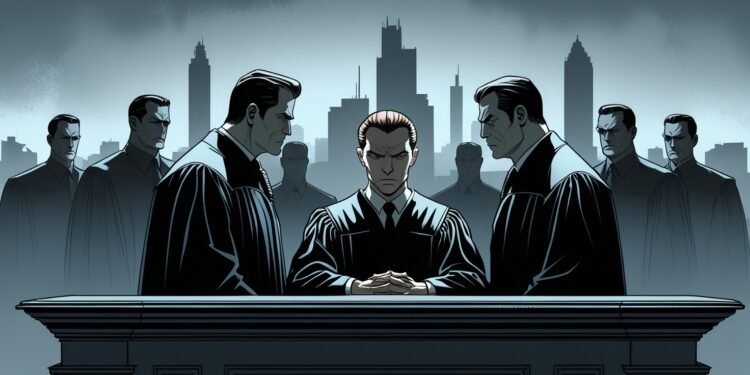Author: Harshita Singh Patel, Student, Sem-5 University of Lucknow
INTRODUCTION
Digital piracy has emerged as one of the most pressing issues in the realm of intellectual property (IP) protection. It involves the unauthorized reproduction and distribution of copyrighted content such as music, films, software, video games, and books through digital means. With the advent of the internet, digital piracy has rapidly proliferated, causing significant economic and creative damage. Countries, including India, have introduced copyright enforcement measures, yet controlling piracy remains a persistent challenge due to the evolving nature of technology and the global nature of the internet.
This article explores the concept of digital piracy, the legal frameworks designed to combat it, particularly in India, landmark case laws, the practical implications of copyright enforcement, and the challenges associated with curbing digital infringement.
HISTORICAL BACKGROUND
The origins of digital piracy can be traced back to the early days of the internet. The development of digital technologies and file-sharing platforms revolutionized how people accessed content, and by the late 1990s, piracy had become widespread.
Early Peer-to-Peer Networks
Napster, launched in 1999, was a significant turning point in the history of digital piracy. It was one of the first peer-to-peer (P2P) file-sharing services, which allowed users to share and download music files freely. Although Napster was shut down following legal action by the Recording Industry Association of America (RIAA) in 2001, it paved the way for other P2P networks such as LimeWire and BitTorrent, which continued to facilitate the illegal distribution of digital content.
Global Expansion and the Entertainment Industry’s Response
As internet penetration expanded globally, piracy spread across borders, creating significant losses for the entertainment industry. According to a 2019 report by the Global Innovation Policy Centre, the global digital piracy market causes losses of around $29.2 billion to the U.S. economy alone each year. The challenge of piracy is exacerbated by the anonymity of users and the lack of harmonized international legal frameworks to address cross-border infringement.
MEANING OF DIGITAL PIRACY
Digital piracy refers to the unauthorized reproduction, sharing, or distribution of digital media without the permission of the copyright holder. It can take many forms, including:
∙ File Sharing: Unauthorized sharing of digital files through P2P networks.
∙ Streaming: Illegally broadcasting or distributing copyrighted content without authorization.
∙ Cracking: Circumventing digital rights management (DRM) technologies to distribute protected software or media.
∙ Counterfeiting: Reproducing and distributing pirated versions of digital products, often at lower prices.
Piracy deprives content creators of fair remuneration for their work, undermines the legal economy, and leads to job losses in industries dependent on intellectual property.
LEGAL FRAMEWORK IN INDIA
India has developed a robust legal framework to address copyright protection, with various laws and regulations targeting digital piracy. The Copyright Act, 1957, is the primary legislation governing copyright protection in India. It was amended in 2012 to address digital piracy and adapt to the changing technological landscape. Key provisions include:
Copyright Act, 1957
The Copyright Act, 1957 provides copyright holders with exclusive rights to reproduce, distribute, and publicly display their works. The Act has been amended several times to align with international treaties and conventions, including the WIPO Copyright Treaty (WCT) and the TRIPS Agreement under the WTO framework.
Section 51 of the Act defines what constitutes copyright infringement. Importantly, it covers both traditional and digital forms of piracy, making it an infringement to use or distribute copyrighted material without authorization in any format, including digital.
Section 63 provides for penalties for infringement, including fines and imprisonment, with increased penalties for subsequent offenses. For example, piracy-related offenses can result in imprisonment for up to three years and fines of up to ₹2 lakh.
Information Technology Act, 2000
The Information Technology Act, 2000 plays a critical role in the enforcement of copyright online. Under the Intermediary Guidelines, online platforms and intermediaries such as internet service providers (ISPs) are required to take down infringing content once they receive a complaint from copyright holders. Failure to do so can result in liability for the platform.
Cinematograph Act, 1952 (Amendment)
The Cinematograph Act of 1952 was amended in 2019 to specifically target camcording piracy, a common method used to pirate films. Under the amendment, unauthorized recording of a movie in cinemas is a punishable offense with imprisonment and fines.
International Frameworks
India is a signatory to international treaties such as the Berne Convention and the WIPO Copyright Treaty, which provide guidelines for copyright enforcement across borders. These treaties obligate India to maintain a minimum standard of copyright protection and enforcement for digital works.
LANDMARK CASE LAWS IN INDIA
Several cases have shaped the enforcement of copyright laws in the digital space in India:
1. Super Cassettes Industries Ltd. v. Myspace Inc.
In this case, Super Cassettes Industries (owners of the T-Series music label) sued Myspace, a social media platform, for copyright infringement. The plaintiff argued that Myspace allowed users to upload and share copyrighted music without proper licenses. The Delhi High Court held that Myspace, as an intermediary, was liable for copyright infringement under Indian law. However, the case also highlighted the complexities of enforcing copyright against global internet platforms.
- Viacom18 Media Pvt. Ltd. v. Jyoti Cable Network
Viacom18, a major media company, filed a case against Jyoti Cable Network for the unauthorized broadcast of copyrighted television content. The court ruled in favour of Viacom18, emphasizing that unauthorized broadcasting of copyrighted content constituted a clear violation of copyright law.
- Star India Pvt. Ltd. v. Haneeth Ujwal
In a landmark decision, the Delhi High Court granted dynamic injunctions against piracy websites that hosted unauthorized streams of sports events, particularly the Indian Premier League (IPL). A dynamic injunction allows the court to issue orders covering a range of domains or websites that may arise in the future to evade enforcement. This case was significant in tackling online sports piracy and demonstrated the evolving approach to dealing with infringing websites.
- Yash Raj Films Pvt. Ltd. v. Sri Sai Ganesh Productions
In this case, Yash Raj Films, a leading film production house, sued a local cable operator for unauthorized telecasting of its film. The court ruled in favour of Yash Raj Films, awarding damages for copyright infringement. This case reaffirmed the court’s commitment to protecting copyright in the face of increasing digital piracy of films.
PRACTICAL IMPLICATIONS AND CHALLENGES OF COPYRIGHT ENFORCEMENT
Economic Impact
Digital piracy results in billions of dollars in lost revenue globally. It affects multiple industries, including film, music, software, and publishing. In India, the film industry, one of the largest globally, suffers significant losses due to camcording piracy, unauthorized streaming, and illegal downloads. According to a 2020 FICCI report, the Indian media and entertainment industry loses around ₹18,000 crore annually to piracy.
Effectiveness of Enforcement Mechanisms
Despite the presence of laws and regulatory frameworks, enforcing copyright in the digital world is fraught with challenges:
∙ Anonymity of Users: The anonymity offered by the internet makes it difficult to track and prosecute individual pirates. Many users employ tools such as VPNs to mask their identity, making enforcement even harder.
∙ Jurisdictional Issues: Piracy is a cross-border problem. Websites hosting pirated content often operate in jurisdictions where enforcement is lax or laws are insufficiently harmonized with international standards. As a result, it is difficult for copyright holders to pursue legal action across borders.
∙ Proliferation of Pirate Websites: Even after enforcement actions, pirate websites tend to reappear under different domain names or use mirror sites to evade blocking measures.
∙ Cost of Litigation: Legal action against piracy is often costly and time-consuming. Copyright holders, especially smaller creators, may find it difficult to afford the financial burden of pursuing litigation.
∙ Technological Evasion: Pirates often stay one step ahead of enforcement efforts by using technological means such as encryption, torrenting, and decentralized platforms, making it difficult for authorities to track and shut down illegal activities.
Role of ISPs and Intermediaries
The role of intermediaries, such as ISPs and content platforms, is crucial in combating digital piracy. However, many platforms hide behind safe harbour protections, arguing that they are not responsible for the content shared by users unless notified. While intermediary liability laws in India, such as the IT Act, provide mechanisms for copyright holders to request content takedowns, enforcement is often reactive and fragmented.
CONCLUSION
Digital piracy poses an ongoing threat to copyright holders across the globe, particularly in countries with large creative and entertainment industries like India. Despite the presence of robust legal frameworks and significant judicial precedents, enforcement remains a challenge due to the cross-border nature of the internet and the ease with which infringing content can be distributed.
India has made significant strides in adapting its copyright laws to address digital infringement, yet issues such as the anonymity of users, jurisdictional hurdles, and the technological sophistication of pirates continue to hinder effective enforcement. To combat digital piracy more effectively, a combination of strong legal frameworks, technological solutions, and international cooperation is essential. Moreover, raising public awareness about the consequences of piracy and promoting affordable legal alternatives to access content will be crucial in reducing the demand for pirated material.
In conclusion, while considerable progress has been made in the fight against digital piracy, the road ahead remains long, and sustained efforts from all stakeholders—governments, industries, and consumers are needed to protect intellectual property rights in the digital age.
REFERENCES
- THE COPYRIGHT ACT, 1957. ACT NO. 14 OF 1957
- THE INFORMATION TECHNOLOGY ACT, 2000.
- THE CINEMATOGRAPH ACT, 1952.
- Super Cassettes Industries Ltd. v. Myspace Inc. CS (OS) No. 2682 of 2008, decided on 29 July, 2011.
- Viacom18 Media Pvt. Ltd. v. Jyoti Cable Network CS (OS) No. 2352 of 2011. 6. Star India Pvt. Ltd. v. Haneeth Ujwal CS(OS) 2243/2014
- Yash Raj Films Pvt. Ltd. v. Sri Sai Ganesh Productions AIRONLINE 2019 DEL 1017
Lorem ipsum dolor sit amet, consectetur adipiscing elit. Ut elit tellus, luctus nec ullamcorper mattis, pulvinar dapibus leo.



